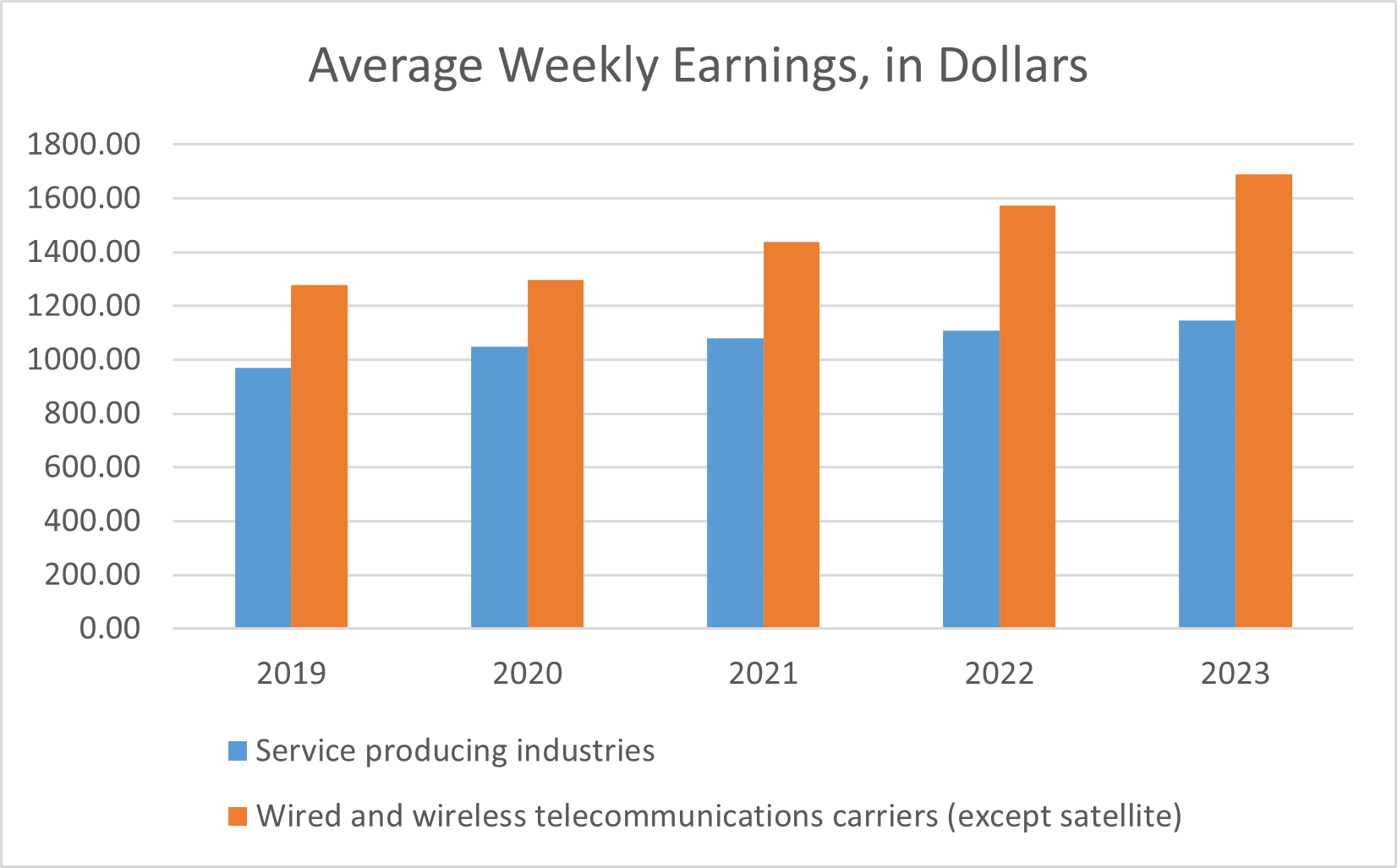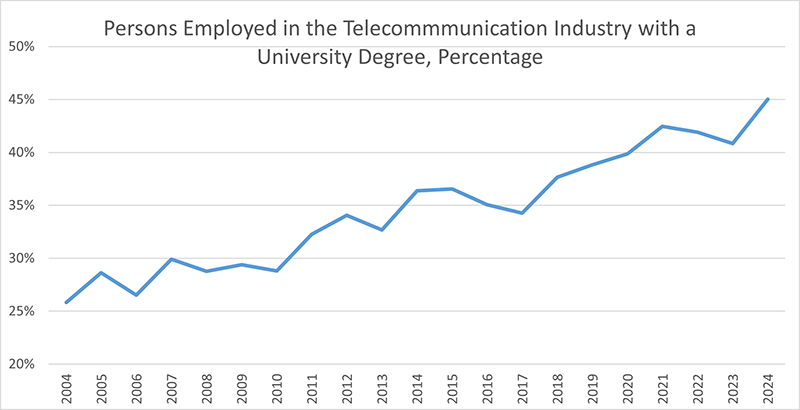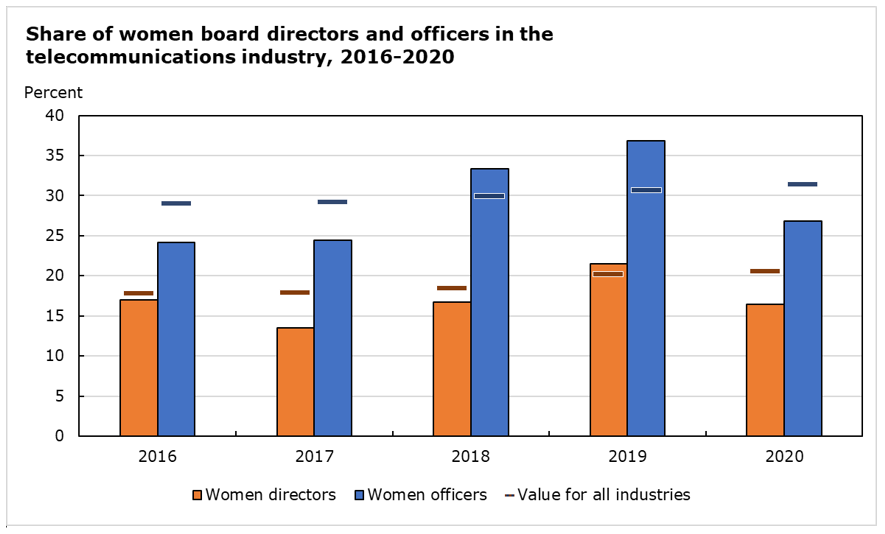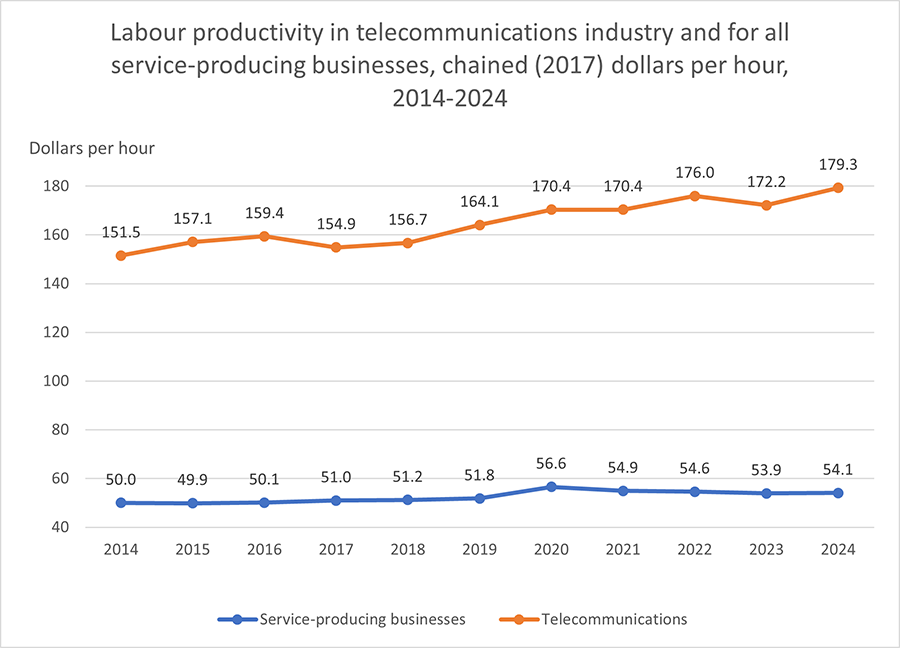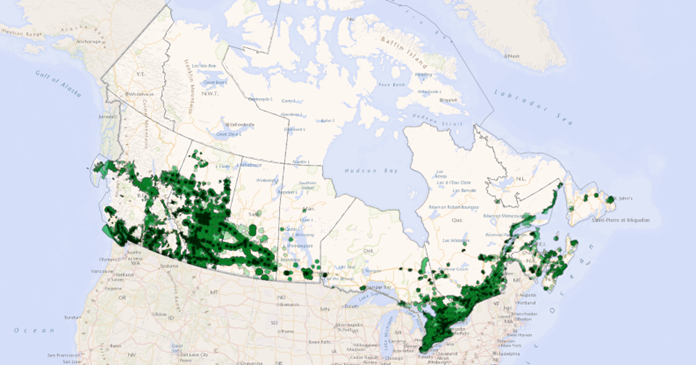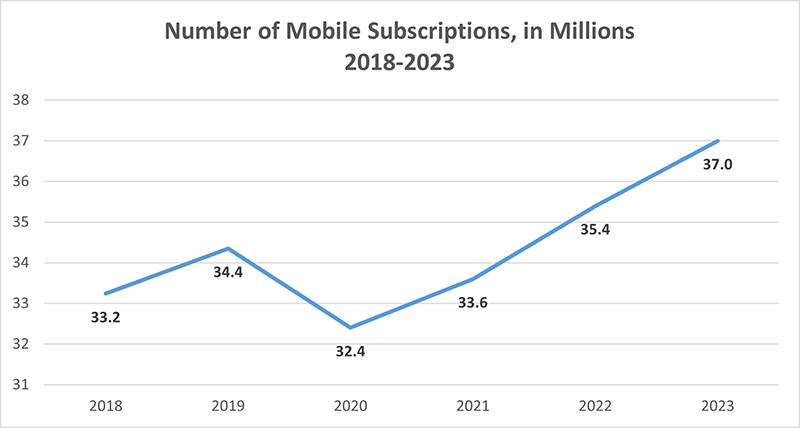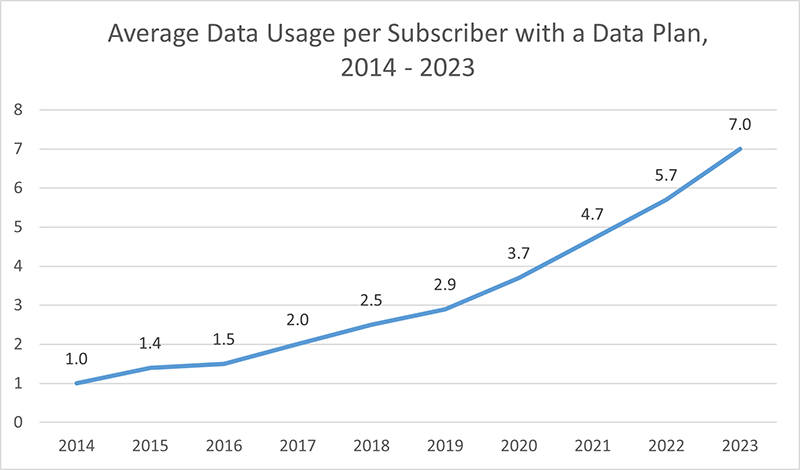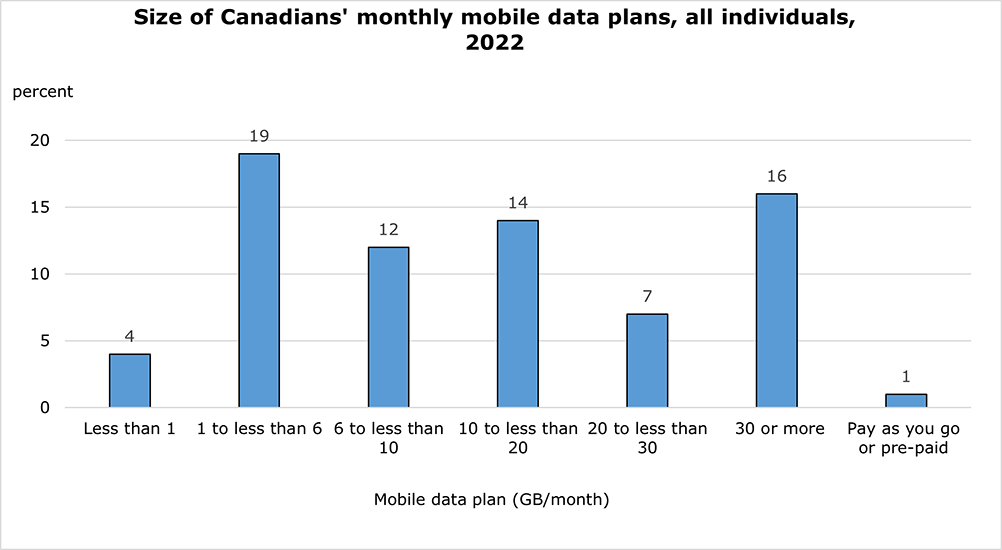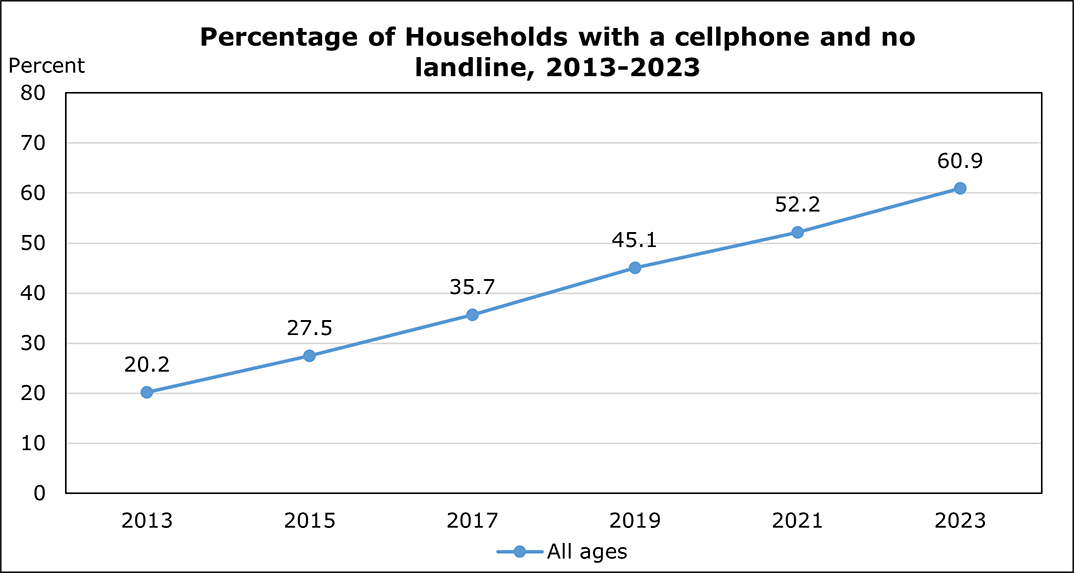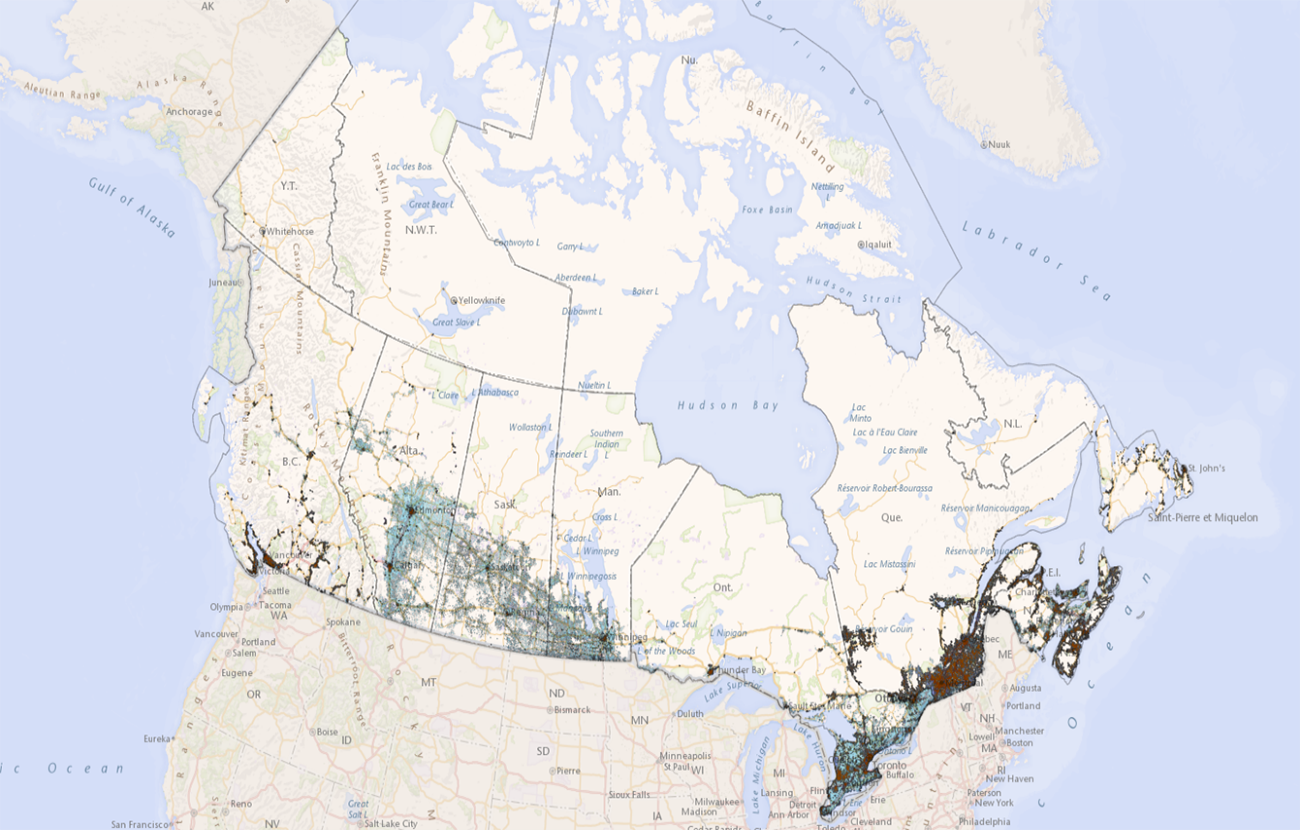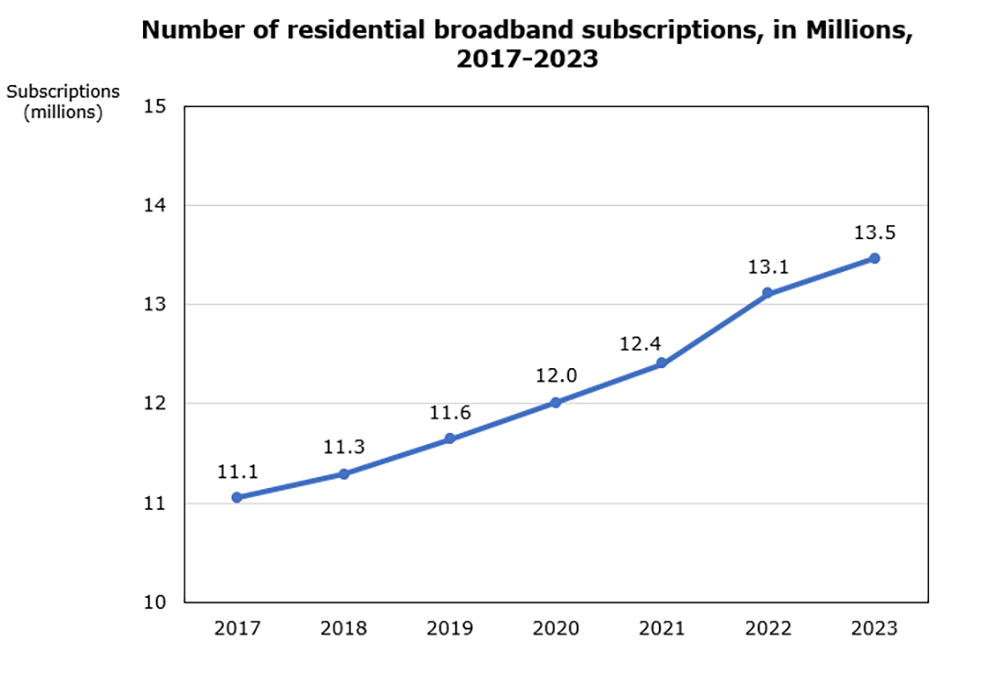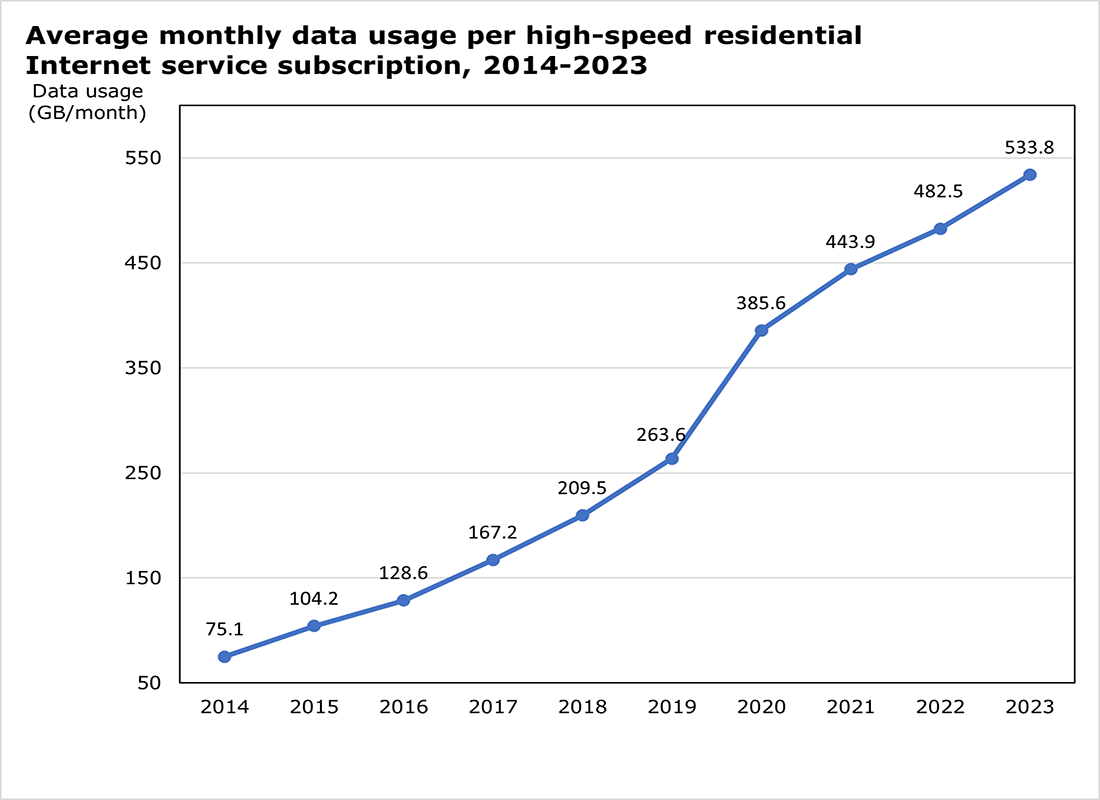Telecommunications Statistics
Telecommunications: Connecting Canadians
Find additional data
Browse Statistics Canada's published data and analysis on the telecommunications industry.
Connecting Canadians: Telecommunications in Canada
Economic measures

This section provides estimates of the economic impact of the mobile telecommunications industry using the input-output model for output, jobs and value added to gross domestic product (GDP).
Share of gross domestic product
In 2022, the gross value added of the mobile telecommunication industry represented 1.1% of Canada's gross domestic product at basic prices. This includes value added from the industry itself, its supply chain and impacts on spending from wages generated by the production (directly and indirectly) of the industry. More information on share of gross domestic product
Output
In 2023, the total output generated by the mobile telecommunications industry was 53.1 billion dollars. This includes revenue from the industry itself, its supply chain and impacts on spending from wages generated by the production (directly and indirectly) of the industry. More information on output
Gross value added
Gross value added is a measure of the contribution to gross domestic product (GDP). The contribution to GDP by the mobile telecommunication industry was 31.2 billion dollars in 2023. This includes value added from the industry itself, its supply chain and impacts on spending from wages generated by the production (directly and indirectly) of the industry. More information on gross value added
Jobs
In 2023, the number of jobs created by the mobile telecommunications industry is estimated to be 156,600. This includes jobs created by the industry itself, its supply chain and impacts on spending from wages generated by the production (directly and indirectly) of the industry. More information on jobs
Spending and prices for cellular services

This section includes information on the amount spent by households and the prices paid by consumers for cellular services.
Monthly spending on cell phone services
In 2023, households across all income quintiles spent approximately $125 per month on cell phone and pager services or 1.8% of total monthly expenditures after tax. More information on monthly spending on cell phone services
Monthly change in the cellular services price index
Consumer prices for cellular services increased by 12.7% in November 2025 compared to November 2024. More information on monthly change in the cellular services price index
Annual average change in the cellular services price index
On an annual average basis, consumer prices for cellular services declined 16.7% from 2023 to 2024, while the all-items Consumer Price Index (CPI) increased 2.4% over the same period.
More information on annual average change in the cellular services price index
Spending and prices for Internet access services

This section includes information on the amount spent by households and the prices paid by consumers for Internet access services.
Monthly spending on Internet access services
In 2023, households across all income quintiles spent approximately $87 per month on Internet access services or 1.2% of total monthly expenditures after tax. More information on monthly spending on Internet access services
Monthly change in the Internet access services price index
Consumer prices for Internet access services increased by 0.2% in November 2025 compared to November 2024. More information on monthly change in the Internet access services price index
Annual average change in the Internet access services price index
On an annual average basis, consumer prices for Internet access services declined 5.8% from 2023 to 2024, while the all-items Consumer Price Index (CPI) increased 2.4% over the same period.
More information on annual average change in the Internet access services price index
Labour

This section provides information on earnings, employment, and trends in education levels and labour productivity in the telecommunications sector.
Employment level
In 2024, the wired and wireless telecommunications industry employed 95,905 people. More information
Average weekly earnings
In 2023, the average weekly earnings for the wired and wireless telecommunications industry was $1,691, or $87,920 on an annual basis. This is higher than the service industry average weekly earnings of $1,146, or $59,573 on an annual basis. More information on average weekly earnings
Education level
In 2024, the percentage of persons employed in the telecommunication industry with a bachelor’s degree or above was 45.0%, up from 25.8% in 2004. More information on education level
Share of women in executive positions
In 2020, women held 16.4% of director board seats and 26.8% of officer positions in the telecommunications industry. More information on Share of women in executive positions
Labour productivity level
In 2024, labour productivity in the telecommunications industry was $179.30 per hour, higher than the value for all service-producing businesses ($54.10 per hour). More information on labour productivity level
Labour productivity growth
Over the last decade (2014 to 2024), labour productivity in the telecommunications industry grew by 18.3% (+1.7% per year on average), while it increased by 8.2% (+0.8% per year on average) for all service-producing businesses. More information on labour productivity growth
Wireless networks infrastructure and coverage

Wireless networks are used to make phone calls and access the internet throughout Canada. This section provides information on data usage, access to and availability of wireless networks in Canada.
5G coverage map
This map shows 5G coverage in Canada. The shaded areas show where 5G networks are in operation, and the non-shaded areas show where there are no 5G networks currently in operation. More information on 5G coverage
Access to mobile networks
In 2023, 93.3% of Canadians had access to 5G networks and 99.5% of Canadians had access to LTE networks. More information on access to mobile networks
Mobile subscriptions
The number of subscriptions to mobile services in Canada was 37.0M in 2023, up from 35.4M in 2022. More information on mobile subscriptions
Data usage
Canadians used an average of 7.0 GB of mobile data per month in 2023, up from 5.7 GB reported in 2022. More information on data usage
Download and upload speeds
For the period of July 3rd, 2025 to October 1st, 2025, the National average mobile network download and upload speeds, were 70.5 Mbps and 10.6 Mbps respectively, as experienced by all users across the mobile networks of all operators. For reference, it is recommended that a minimum download speed of 5.0 Mbps is used to stream HD quality video, or 25 Mbps for UHD (4K) video. More information on download and upload speeds
Size of monthly mobile data plan
In 2022, almost a fifth of Canadians (19%) had a monthly data plan of 1 GB to less than 6 GB, while approximately one in six Canadians (16%) had a data plan of 30 GB or more. More information on Size of monthly mobile data plan
Cord cutting
In 2023, 60.9% of households in Canada reported they had a cellphone and no landline, up from 20.2% in 2013. Close to 90% of households with a respondent less than 30 years old reported they had a cellphone and no landline. More information on cord cutting
Internet services infrastructure and coverage

Residential high-speed Internet services are provided to homes through various technologies such as DSL (Digital Subscriber Line), cable, FTTH (Fibre-to-the-Home)/ FTTP (Fibre-to-the-Premises), satellite, and fixed wireless technologies. This section provides information on data usage, access, availability and subscriptions to residential high-speed Internet in Canada.
Broadband Internet service availability
This map gives an overview of broadband Internet coverage in Canada in 2023. Shaded areas indicate where broadband Internet services are available, and unshaded areas indicate where no broadband Internet services are available. More information
Access to broadband Internet services
In 2023, 95.4% of Canadian households had access to unlimited broadband Internet coverage with at least 50 megabits per second (Mbps) download and 10 Mbps upload speeds (often referred to as “50/10”), meeting the Government of Canada’s goal for national broadband availability in 2021. More information on access to broadband Internet services
Residential broadband Internet subscriptions
The number of residential broadband Internet subscriptions in Canada was 13.5M in 2023, up from 13.1M in 2022.
More information on residential broadband Internet subscriptions
Average monthly data usage per high-speed residential Internet subscription
In 2023, the average monthly data used per high-speed residential Internet service subscription was 533.8 GB, an increase of 11% from 2022.
More information on average monthly data usage per high-speed residential Internet subscription
Investment

This section includes information on investments in telecommunications infrastructure and capital expenditures in the telecommunications industry.
Spectrum
In 2023, 4099 spectrum licences were auctioned in the 3800 MHz band for a total value of $2.16 billion or $0.26 per MHz per person ($/MHz-Pop). More information on spectrum
Investment in communications networks
In 2023, private and public industries in Canada invested 7.8 billion dollars in communications networks, including 3.3 billion dollars in optical fibre cables. For more statistics on infrastructure and communications networks, visit Statistics Canada’s Infrastructure statistics hub.
Capital expenditures
Capital expenditure in the wired and wireless telecommunications industry was estimated to be 10.9 billion dollars in 2024, or roughly 262 dollars per Canadian. More information on capital expenditures
The Canadian Radio-television and Telecommunication Commission Communications Market Reports

The Canadian Radio-television and Telecommunications Commission Communications Market Reports (CMR) provide financial and performance information on Canada's communications market sectors. The CMR are intended to support an open and informed public discussion of broadcasting and telecommunications regulatory policies and issues.

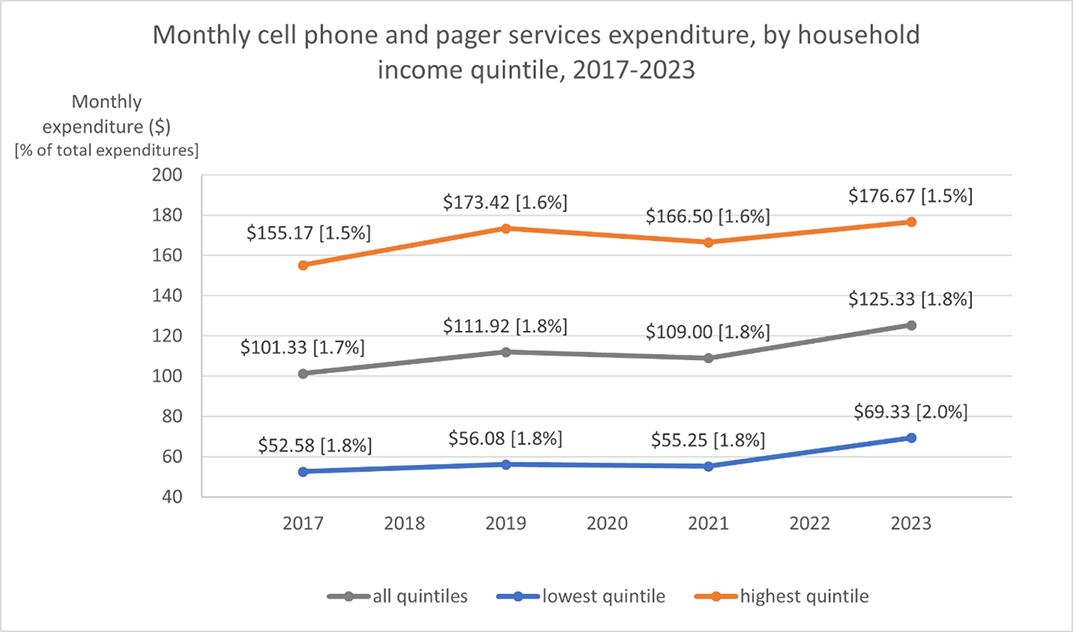
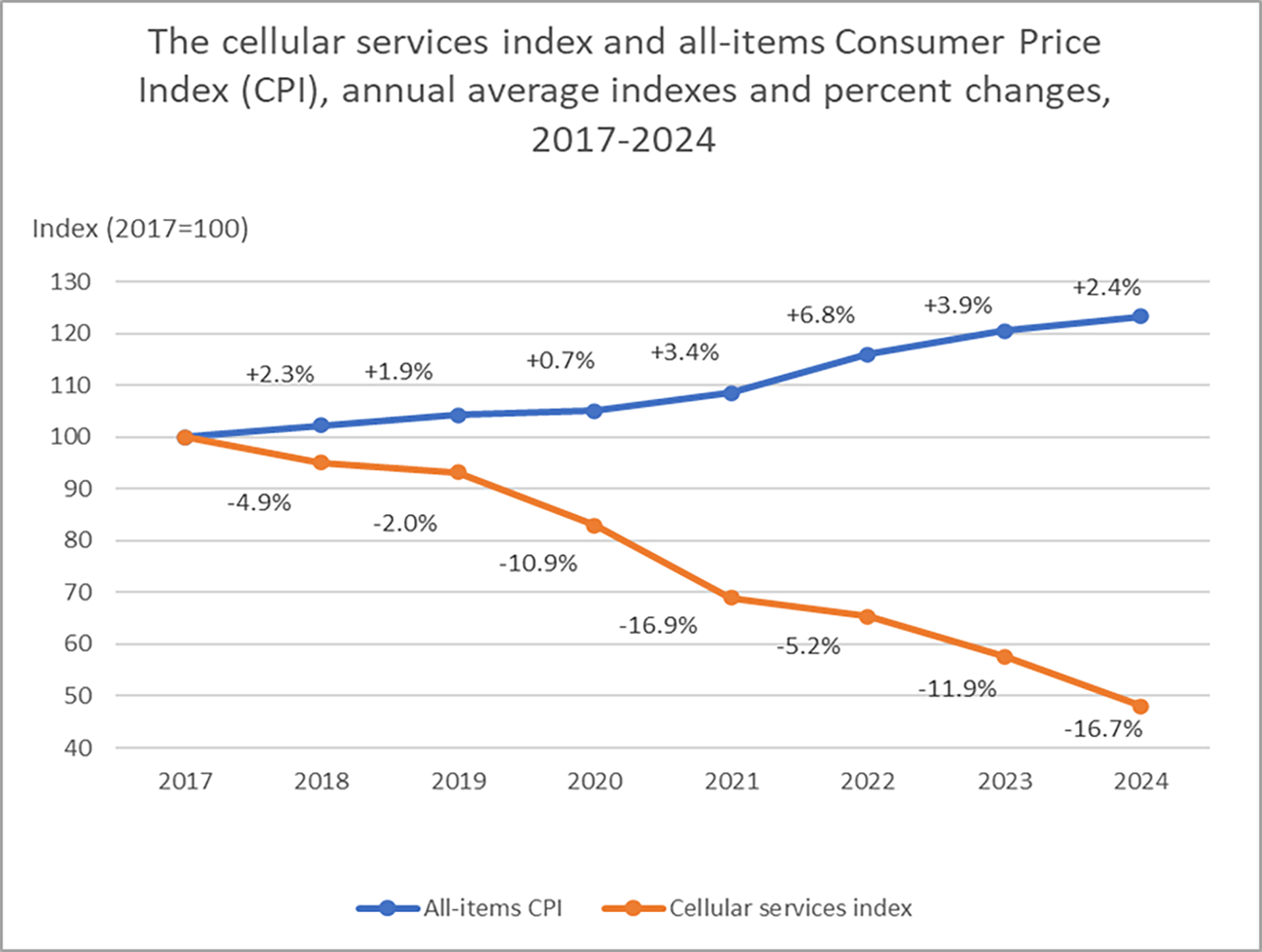

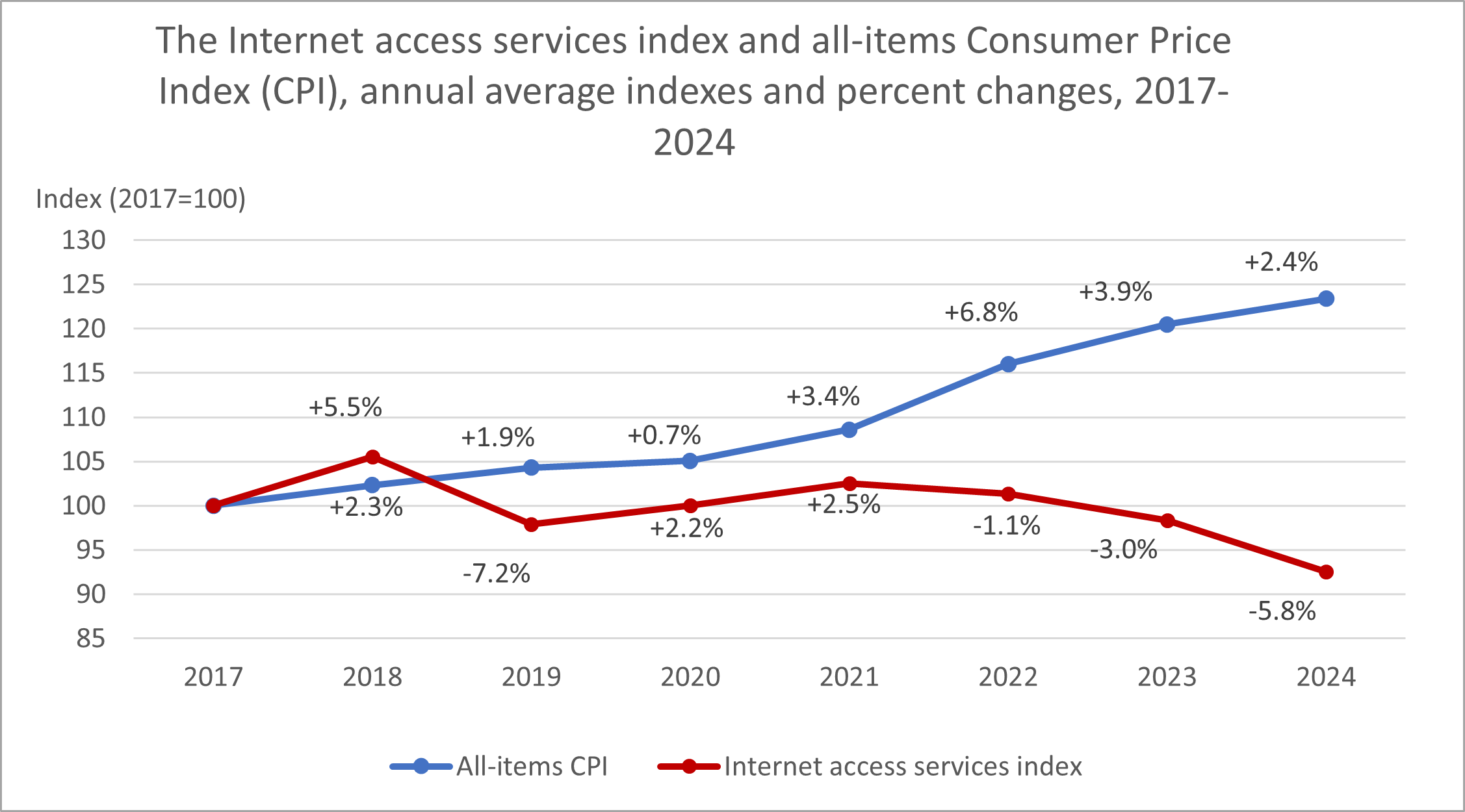
![Number of employees, wired and wireless telecommunications carriers (except satellite) [NAICS - 5173], 2018-2023](/sites/default/files/images/2024-06/subject-telecommunications-indicator-employment-level-2023-eng.png)
